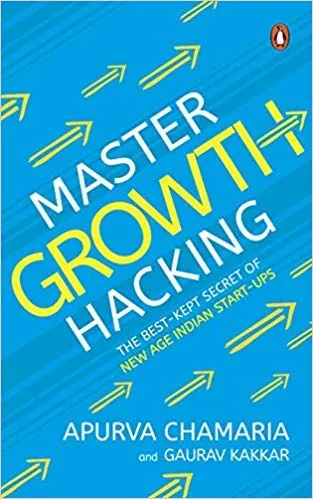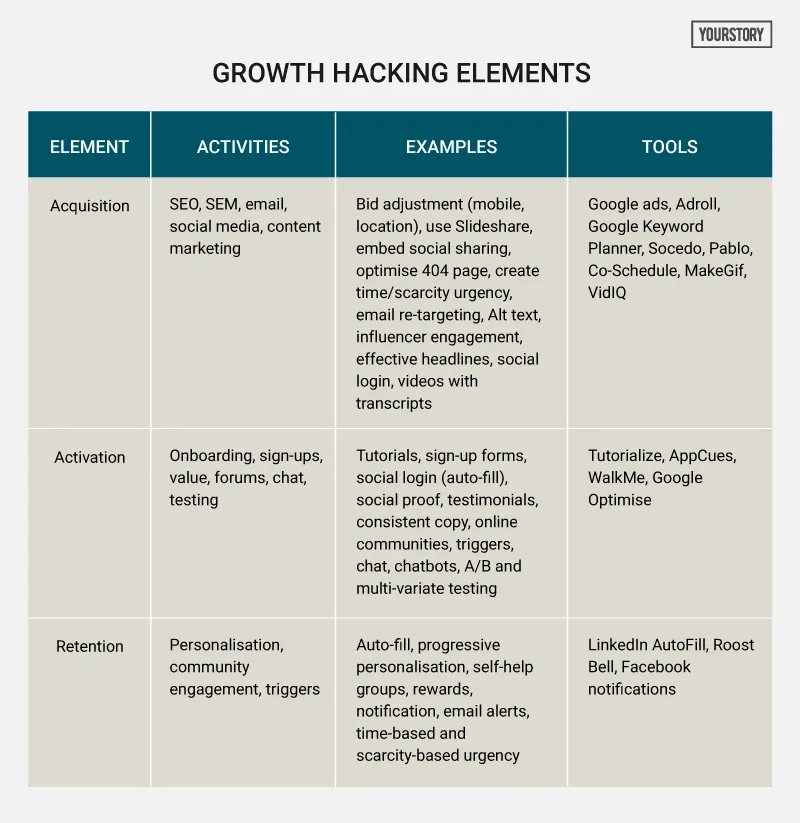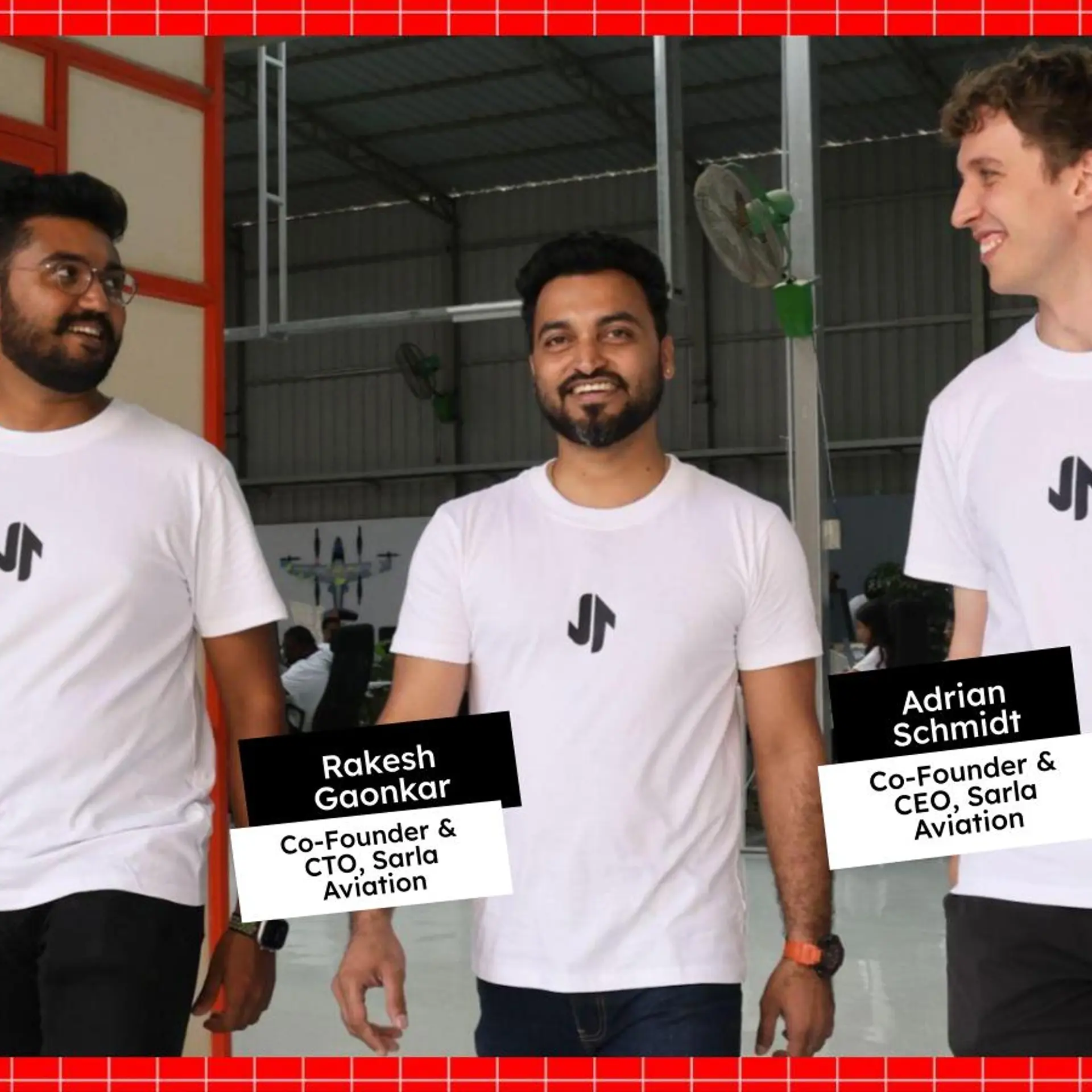Mastering Growth Hacking: how to combine technology and creativity for the growth mindset
Rapid and frugal growth is key for resource-starved entrepreneurs. This book shows how nine prominent Indian startups leveraged growth hacking for success – and how you can, too.

Growth hacking is a combination of coding, data intelligence, and marketing. It doesn't require a lot of investment, but needs a lot of creativity, smart data analysis and agility. The approach is now widely used by startups and entrepreneurs around the world and in India, according to the new book, Master Growth Hacking: The Best-Kept Secret of New-Age Indian Startups.
Apurva Chamaria is the chief revenue officer at RateGain, and was previously head of corporate marketing for HCL Technologies. He graduated from Harvard Business School, International Management Institute (New Delhi), Indian Institute of Mass Communication (New Delhi) and Mayo College (Ajmer). Gaurav Kakkar heads digital marketing engagements for HCL's clients in North America. He holds a double master's and is an alumnus of Virginia Tech.
Their book includes interviews with the founders of nine prominent Indian startups: Zomato, ShopClues, UrbanClap, PaisaBazaar, Furlenco, FusionCharts, WittyFeed, UpGrad, and IndiaMART. Apurva and Gaurav are also co-authors of You Are the Key: Unlocking Doors through Social Selling.
“Startups, with their insatiable appetite to grow, are not just challenging but also successfully gaining over large, established competitors. Their open-mindedness, agility, and willingness to learn continuously power them to surge ahead and claim their rightful place in the sun,” the authors begin.
Growth hacking is about a mindset, and focuses on the small yet significant and often counter-intuitive interventions that are part of the startup’s DNA. It helps startups grow frugally and rapidly, even exponentially. See also YourStory’s related articles 22 Growth Hacks, How to be a Growth Hacker, and The Patience Triangle.
The material is spread across nine chapters and 300 pages, and presented in a straightforward, easy to read manner with lots of illustrations and screenshots. I have summarised some of the key principles in Table 1 below; each chapter has a wealth of case studies, founder insights, and actionable tips.

Foundations
Resource and time constraints are forcing entrepreneurs to follow unorthodox approaches to marketing and growth. The aim of marketing is to increase awareness, desire, and advocacy for the offering. But traditional marketing approaches are no longer as effective in world of connected, informed, curious, and communicative consumers who can see through hype and spin.
Carol Deck defines the “growth mindset” (as compared to the “fixed mindset”) as a combination of open mindedness, reflection, exploration and experimentation. The definition of growth hacking has been progressively built up by Sean Ellis, Andrew Chen, Aaron Ginn, and Ryan Holiday.
Principles of growth hacking include creativity, use of technology, focus on metrics, analysis, customer interaction, continuous testing, ability to learn, improvisation, willingness to pivot, virality, and relentless focus on growth. It draws from disciplines like psychology, marketing, advertising, design and economics.
Effective growth hacking draws on user feedback to test assumptions, optimises performance of all touchpoints, rewards and entices users, and promotes social currency. Care should also be taken to respect user privacy and sentiments, as well as to avoid spamming users and reduce alerts to a minimum.
“A growth hacker is a jack of all trades and master of at least one,” the authors explain. Growth hacking can be applied not just in short bursts or tweaks but on a continuous basis. It is a scientific, immersive and responsive methodology. Growth hacking is trackable, testable, and scalable, and is a blend of art and science.
Growth hacking team roles include growth lead, product manager, marketer, growth engineer, and designer. The team has to be dynamic and well-networked in the industry, and be keenly focused on understanding user behaviour economics.
The authors bring readers up to speed on terms like A/B testing, Alt text, bid adjustments, CPC, CRO, CTA, CTR, heat maps, long-tail keywords, NPS, PPC, SEM, and SEO. Going beyond jargon, growth hacking should ultimately focus on helping customers become successful in solving their problems.
Phases and activities
The growth-hacking approach spans customer acquisition, activation, engagement, and retention; it also involves re-targeting, re-acquisition, immersion, recommendation, and ultimately revenue. Growth hacking applies not just to marketing but also to product development in early stage startups. It can be used to improve the initial MVP, and ultimately turn product usage into habit.
Personalisation is an important technique to adopt, across demographic, psychographic, behavioural, and transactional dimensions. Offering personalised experiences helps retain customers, provide the human touch, improve engagement, lower bounce rate, increase conversion rate, reduce time to order, and increase order value. In the long run, it increases brand loyalty and brand advocacy.
The authors describe many types of personalisation: by location, account (for B2B customers), and industry. Progressive profiling in chunks can help reduce the customer’s annoyance of having to fill out large forms during the process of personalisation.
Regular and surprise rewards can be given in the form of incentives, monetary benefits, points and membership plans. “One of the most successful methods to develop a user habit is by enabling the freemium model,” the authors explain. Improvisation can help develop and refine the appropriate incentive models.
Forming online communities of customers can foster good connects between them, and thus identify influencers and advocates. Roles in customer communities include moderator, administrator, and analyst.
The user communities should have active discussions and campaigns, and the growth hacking team should track the performance of the community via an engagement index and reach index. Rewards can be given to outstanding and loyal community members.
Special announcements or offers for customers can be launched via personalised triggers, for example via email. Live chat should be integrated with the CRM system. Trends to watch in this space are the rise of AI-based intelligent chatbots.
In addition to the tools mentioned in Table 1 above, one chapter describes a range of other tools for growth hacking: HelloBar (managing CTA), BuzzSumo (topic engagement, influencers), ClickTale (website journey), and MixPanel (funnels, people analytics).
Another chapter describes analytics tools and hacks. The analytics capabilities need to grow in the startup’s journey: founding (no dedicated analytics team), challenger (small marketing team), catalyst (own data infrastructure for content, marketing), and transformational (predictive analytics, forecasting).
Startups should come up with metrics to chart business goals, activity goals, and frequency of measurement. Examples in e-commerce include average order size, shopping cart abandonment rate, product affinity, and average order size.
The authors also describe a range of tools and hacks for website analytics (Google Analytics, Optimizely, UserTesting.com), social media analytics (FollowerWonk, Qunitly, Cyfe, SocialRank), and mobile analytics (Apsalar).
IBM Watson tools offer broad insights on personality characteristics, values, and needs. Examples of customer needs include excitement, harmony, curiosity, closeness, self-expression, liberty, love, practicality, stability, challenge and structure.
Case studies and founder tips
Early successes of growth hacking include PayPal (referral incentives; bots and widgets for cross-posting), DropBox (landing page to collect email ids; double increases for referrals; increases for social media posts), Slack (Twitter influencers), and ScoopWhoop (clickbait, listicles).
ShopClues uses personalised product recommendation, email targeting, testing of ad creatives, and user path analysis to identify LTV. It has developed its own A/B tools for incremental testing. “Highlighting wins, losses and learnings can help foster a culture of growth hacking within the company,” advises Co-founder Radhika Aggarwal.
Furlenco zeroed in on the rental over ownership model for furniture. It covers delivery and insurance. It began with the expat market in India (contacted via broker partnerships), and then expanded to style-conscious locals and playschools. It also partnered with AirBnB.
Zomato’s quirky ads and messages bring a smile to users, and lead to viral effects; but it also respects cultural sensitivity. It has subscription-based loyalty programmes called Treats and Gold, and posts stickers and tent cards in restaurants. The “order online” button is well-positioned in its app and website. It uses gamification via user ratings and reviews, and classifies users into four categories: Foodie, Big Foodie, Super Foodie and Connoisseur.
PaisaBazaar offered free credit reports via an Experian partnership. It rode the India Stack wave, and teamed with a range of bank partners. It speeds up customer response times via deep data analytics, AI and ML.
Founded in 1996, IndiaMart used to send postcards to potential customers during its early days. It later launched a request-for-quotations product called Buy Leads, encouraging buyers to share their buying needs. This increased buyer fulfillment rate and reduced seller churn rate.
Founded in 2014 in Indore, WittyFeed created its own products like Viral9 to enable social media users to share links and earn while doing so. “We have both prospector and miner growth hackers,” says Co-founder Vinay Singhal. The startup has a group of national and international mentors also.
Urban Clap unleashed viral effects through creative videos that connected its offerings to social issues. In another instance, a customer complained in verse; the customer service response was in verse too. The startup also partnered with the government’s National Urban Livelihoods Mission.
Growth hacking is a planned practice and is an essential part of the culture of an organisation, according to Abhiraj Bahl, Co-founder, UrbanClap. It involves going beyond gut feel and confirmation bias to “data first” decisions, explains Pallav Nadhani, Co-founder, FusionCharts. Growth hacking is particularly well-suited for the accelerated feedback loops needed in the tech industry, but has existed in various forms for traditional industries as well.
FusionCharts systematically targeted trade magazines and events based on credibility and relevance, and leveraged humour and even cartoons in its messaging. Different metrics were chosen for lead-generation and brand building activities. Open source collaboration helped build new plug-ins. It tracked channel effectiveness through metrics like generated leads, conversions, and cost per conversion.
The appendix provides examples of unique messaging from FusionCharts: “Data doesn’t have to be boring”; “Spread delight using charts”; “We have a customer even in Greenland”; “Learn how the right data visualisation can help you sell more”; “Make your apps look like a million bucks”; “The industry’s leading solution now has 20,000 customers. Are you missing out on something?”; “XYZ uses it. What about you?”
Launched in 2015, UpGrad successfully partnered with the government initiative Startup India. It also uses chat to prompt “fence-sitters” into more action after visiting a site. The growth product manager leads the growth hacking team.
Mayank Kumar, Co-founder of UpGrad, cautions that the team “hacking” may have connotations of shortcuts, but growth hacking is based on deep understanding of consumer psyche and data.
It would have been great for the book to end with a chapter on emerging trends in growth hacking, and where the field may be headed in the coming years. The book’s website has links to blogs, but could do a much better job of integrating fresh insights and case studies. Still, the book is a must-read for entrepreneurs looking for fast and sustainable growth.







